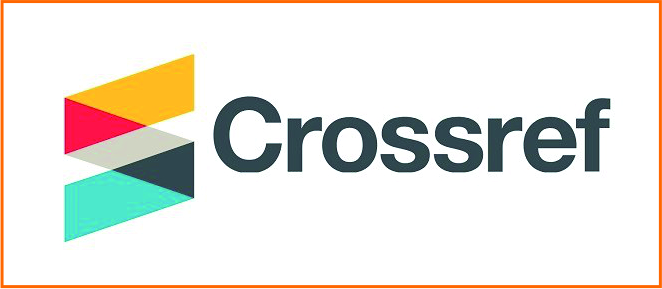Application Study of Art Deco Style to Buildings at Teluk Betung, Bandar Lampung
Abstract
Teluk Betung was the capital of Lampung residency during the Dutch colonial era and has historical value. There were colonial-style buildings, including art-deco. Therefore, it is necessary to conduct a study on “The Application of Art deco Style in Teluk Betung”. This research was qualitative, with historical methodology. The research area determined based on previous studies, then defining the art-deco style buildings. There were 11 art-deco style buildings. Precedents were taken from art-deco style buildings on Braga Street, Bandung. The findings of this study were: (a) The use of art deco ornamentations in Teluk Betung was minimal, unlike in Braga, which was rich, detailed and heavy; (b) art-deco in Teluk Betung used flat, 2-dimensional geometric square elements, while in Braga, the decorative elements were 3-dimensional and protruding; (c) most of corner buildings had segmented and rigid turns, only a few having streamlined, curved corners. In Braga, most corner buildings had streamlined turns; (d) horizontal-line elements stood out in the art-deco buildings in Teluk Betung, meanwhile in Braga, horizontal lines were not as prominent as they were. Overall, the art deco characteristics in the Teluk Betung were geometric deco, horizontal straight-line deco, streamlined deco, and a few ornamental deco elements.
Keywords
Full Text:
PDFReferences
Abdussamad, Z. (2021). Metode Penelitian Kualitatif (P. Rapanna, Ed.). Syakir Media Press.
Amar. (2009). IDENTITAS KOTA, FENOMENA DAN PERMASALAHANNYA. Ruang, 1(No.1).
Amboro, K., Syahidah, F., Hartati, U., & Kuswono. (2018). Album Metro Tempo Dulu Era Kolonisasi 1932 - 1940-an. Dinas Perpustakaan & Kearsipan Daerah Kota Metro (DISPUSARDA).
Aulia, A., & Anisa, A. (2021). Kajian Konsep Arsitektur Art Deco pada Planetarium Adler. Jurnal Linears, 4(1), 14–20. https://doi.org/10.26618/j-linears.v4i1.5017
Bayer, P. (1992). Art Deco Architecture Design, Decoration and Detail from the Twenties and Thirties ( PDFDrive ).pdf. James and Hudson.
Benton, C., Benton, T., & Wood, G. (2003). Art Deco 1910 – 1939. V&A Publications.
Fadilasari, D. (2019). Analisis Penerapan Art Deco Pada Rumah Di Bandung Periode Perang Dunia I-II Studi Kasus: Tiga Villa dan Perumahan Dosen UPI. JURNAL ARSITEKTUR, 9(2), 1. https://doi.org/10.36448/jaubl.v9i2.1256
Fadilasari, D., & Lisa, D. (2021). Identitas Kota Bandar Lampung pada Fasad Bangunan Restoran dan Coffee Shop Waralaba di Sepanjang Ruas Jl. P. Antasari, Jl. A.Yani, dan Jl. Z.A Pagar Alam – Bandar Lampung. In F. A. Nuzir, C. Persada, & A. P. Redaputri (Eds.), Lokalitas Lampung (pp. 277–300). Universitas Bandar Lampung Press.
Hermawan, I. (2018). Persebaran Bangunan Pertahanan Jepang Di Telukbetung Kota Bandar Lampung. Berkala Arkeologi SANGKHAKALA, 20(2), 88. https://doi.org/10.24832/bas.v20i2.281
Ishar, S. I., & Sadad, I. (2017). ANALISIS SPIRIT OF PLACE KAWASAN PASAR TELUK BANDAR LAMPUNG SEBAGAI WUJUD KONSERVASI KAWASAN KOTA TUA. Pengaruh Kualitas Produk Dan Promosi Terhadap Keputusan Pembelian Pakaian Di Usaha Mikro Kecil Menengah, 1(0118047804), 1–50.
Iskarina, M., Yuliana, N., Wulandari, T., & Pratama, R. A. (2022). EKSPLORASI ASPEK HISTORIS MASJID JAMI’ AL-ANWAR DALAM PROSES ISLAMISASI DI TELUK BETUNG SELATAN, LAMPUNG. Jurnal Artefak, 9(1), 1–8. https://jurnal.unigal.ac.id/index.php/artefak/article/view/6478
Jaya, I. M. L. M. (2020). Metode Penelitian Kuantitatif dan Kualitatif. Anak Hebat Indonesia.
Labdo, P., Sudaryono, & Ikaputra. (2023). Tipologi Arsitektur Fasad Art Deco pada Bangunan di Yogyakarta. Journal of Architecture Design and Development, 04(01).
Lisa, D., Yunita, K., & Kelik, B. (2022, December 13). Kawasan Teluk Betung sebagai Historical Urban Lanscape. Prosiding Seminar Nasional Ilmu Teknik Dan Aplikasi Industri.
Manan, A. (2019). Pengadilan Agama Cagar Budaya Nusantara Memperkuat NKRI (1st ed.). KENCANA.
Nagara Prijatna, P., Wayan Srijaya, I., Palupi Titasari, C., & Studi Arkeologi, P. (2022). Adaptasi Arsitektur Kolonial terhadap Iklim Tropis (Analisis Fasad Gedung SMA Negeri 2 Purwokerto). Jurnal Ilmiah Multidisiplin, 1(1), 3698–3706.
Nursanty, E. (2024). Teori Perkembangan Arsitektur Modern Pasca Revolusi Industri (H. R. D. Putranti, Ed.). Yayasan Drestanta Pelita Indonesia .
Octadinata, A., Persada, C., & Prasetyo, E. (2020). Rancangan Kawasan Kota Tua Teluk Betung Selatan Sebagai Destinasi Wisata Kota Bandar Lampung. LOSARI : Jurnal Arsitektur Kota Dan Pemukiman, 5(2), 96–107. https://doi.org/10.33096/losari.v5i2.117
Persada, C., & Octadynata, A. (2021). Pengembangan Jalur Wisata Heritage di Kawasan Kota Tua Teluk Betung Selatan, Kota Bandar Lampung. In Lokalitas Lampung (p. 347). UBL Press.
Riza, M., Doratli, N., & Fasli, M. (2012). City Branding and Identity. Procedia - Social and Behavioral Sciences, 35(December 2011), 293–300. https://doi.org/10.1016/j.sbspro.2012.02.091
Safitri, A. N. (n.d.). Identifikasi Konsep Arsitektur Art Deco pada Bangunan Roemahkoe Heritage Hotel. http://siar.ums.ac.id/
Sari, I. N., Kusuma, D. W., Mafulah, S., Brata, D. P. N., Karwanto, & Supriyono. (2022). Metode Penelitian Kualitatif (Hayat, Ed.). Unisma Press.
DOI: http://dx.doi.org/10.36448/ja.v15i1.4120

This work is licensed under a Creative Commons Attribution-NonCommercial-NoDerivatives 4.0 International License.
JURNAL ARSITEKTUR saat ini terindeks:











This work is licensed under a Creative Commons Attribution-NonCommercial 4.0 International License




